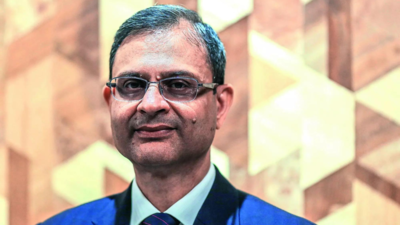India still key driver of global growth: RBI guv

Mumbai: Even as global economic risks mount, India continues to stand out as a key engine of global growth on the back of strong domestic fundamentals and a resilient financial system, RBI governor Sanjay Malhotra said in the central bank’s financial stability report.“In a world of increasing uncertainty, India remains a key driver of global growth,” Malhotra said, highlighting the country’s robust demand, prudent policymaking, and macroeconomic stability. While external shocks and climate-related risks could affect the growth outlook, “the outlook for inflation is benign,” he added, with increasing confidence that inflation will remain aligned with the central bank’s target.According to the report released by RBI on Monday, gross NPAs of the banking system fell to a multi-decade low of 2.3% in March 2025, down from 2.6% in Sept 2024, driven largely by loan write-offs, which rose to 31.8% of NPAs in FY25.

The report warned that gross non-performing assets (GNPAs) could rise to 2.6% by March 2027. Public sector banks saw rising stress in credit cards (14.3% GNPA vs 2.1% for private banks), while agriculture had the highest sectoral GNPA at 6.1%. Large borrowers’ GNPA ratio halved to 1.9%, and none of the top 100 borrowers were classified as NPAs, with their loan share stable at 15.2%.Global growth forecasts have been revised down by the IMF, World Bank, and OECD in light of mounting uncertainties. “The announcement of large tariffs by the US administration in April has set in motion a new paradigm in trade and economic policy,” Malhotra added. This, coupled with elevated geopolitical tensions, has heightened financial stability risks and increased market volatility. “The turbulence in April was a stark reminder of how existing vulnerabilities in the global financial system are amplified by sudden shocks,” he said.Despite this global volatility, India’s financial system is growing more robust. “The resilience of the domestic financial system is continuously improving,” Malhotra said. Banks and non-banks now operate with strong capital buffers, low non-performing assets, and healthy profitability. Stress tests suggest they would remain stable even under adverse scenarios. He also noted broader global challenges – fragmentation in trade, rapid tech disruption, climate change, and prolonged geopolitical tensions – that complicate economic forecasting and policy responses. In such a landscape, regulators must be “vigilant, prudent and agile”.India’s financial sector is being steered toward balancing innovation with safety. “We remain committed to protecting customers, promoting competition and fostering innovation,” Malhotra said.




